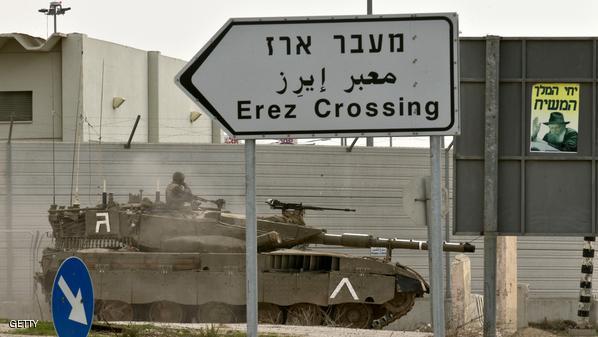
Ref: 61/2015
The Palestinian Center for Human Rights (PCHR) published a new report as part of the series of the monthly “Closure Reports” addressing the latest developments of the state of the Gaza Strip border crossings in October 2015. The report documents the impact of the ongoing Israel-imposed siege on Palestinian civilians, which affects their economic and social conditions. It also refutes Israel’s claims that it has eased the closure of the Gaza Strip for the eighth consecutive year. Furthermore, the report highlights that the continuing Israeli measures aim to the institutionalization of the closure and making the illegal restrictions imposed on the movement of persons and goods acceptable on the
international level although they violate the international law, including the international humanitarian and human rights laws.
According to the report, no remarkable change was witnessed on the movement of commodities. An almost complete ban continued on the exportation of commodities to the West bank, Israel and abroad, but exceptionally allowed the exportation of 148 truckloads to the West Bank; 135 truckloads of agricultural products, 2 truckloads of furniture,6 truckloads of scrap, 4 truckloads of clothes, and a truckload of cloth.
Concerning the imports, more obstacles were created for the entry of basic commodities to the Gaza Strip, especially construction materials needed for Gaza reconstruction process and infrastructure projects. However, Israeli forces allowed the entry of 14,925 truckloads, an average of 481 truckloads daily. The number of truckloads allowed to be entered constitutes 84.3% of the number of truckloads which used to be entered into the Gaza Strip before the closure (570 truckloads daily). It should be noted that the Gaza Strip needs have increased over the past 9 years due to the population growth. It should be noted that Karm Abu Salem crossing, which is the only commercial crossing in the Gaza Strip, was closed in October for 12 days (38.7% of the total reporting period) due to Jewish holidays or for security reasons.
As for the movement of persons, the Gaza Strip population has been denied their right to the freedom of movement and has been suffering due to obstacles imposed on their movement at all crossing borders.
Rafah International Crossing Point was completely closed in October (31 days), but it was partially opened for 3 days to allow those who stuck out of the Gaza Strip to return. During the days the crossing point was open, 3,096 Palestinians, including 2,368 pilgrims, returned to Gaza. The number of Palestinians, who registered for traveling via the crossing and are waiting for their turn to travel, was over 25,000, including hundreds of patients, university students and holders of residence visas in countries abroad, according to the Ministry of Interior in Gaza.
In October, Israeli forces continued to impose additional restrictions on the movement of Palestinians via Beit Hanoun (Erez) crossing, the only crossing between the Gaza Strip and West Bank, including occupied Jerusalem and/or Israel. As a result, 1.8 million persons were denied their right to travel. However, Israeli forces allowed limited categories to travel via Beit Hanoun crossing: 1,437 patients accompanied by 1,350 persons; 4,951 traders, 2,287 persons for personal needs, 525 workers of international
organizations into the Gaza Strip, 790 of elderly people to perform prayers in al-Aqsa mosque and 183 travelers via al-Karama (Allenby) crossing under some complicated security conditions.
In the report’s recommendations, PCHR called upon the international community, particularly the High Contracting Parties to the Fourth Geneva Convention Relative to the Protection of Civilian Persons in Time of War, to immediately intervene to compel Israeli authorities to open the Gaza Strip crossings and put an end to the grave deterioration of humanitarian situation in the Gaza Strip.